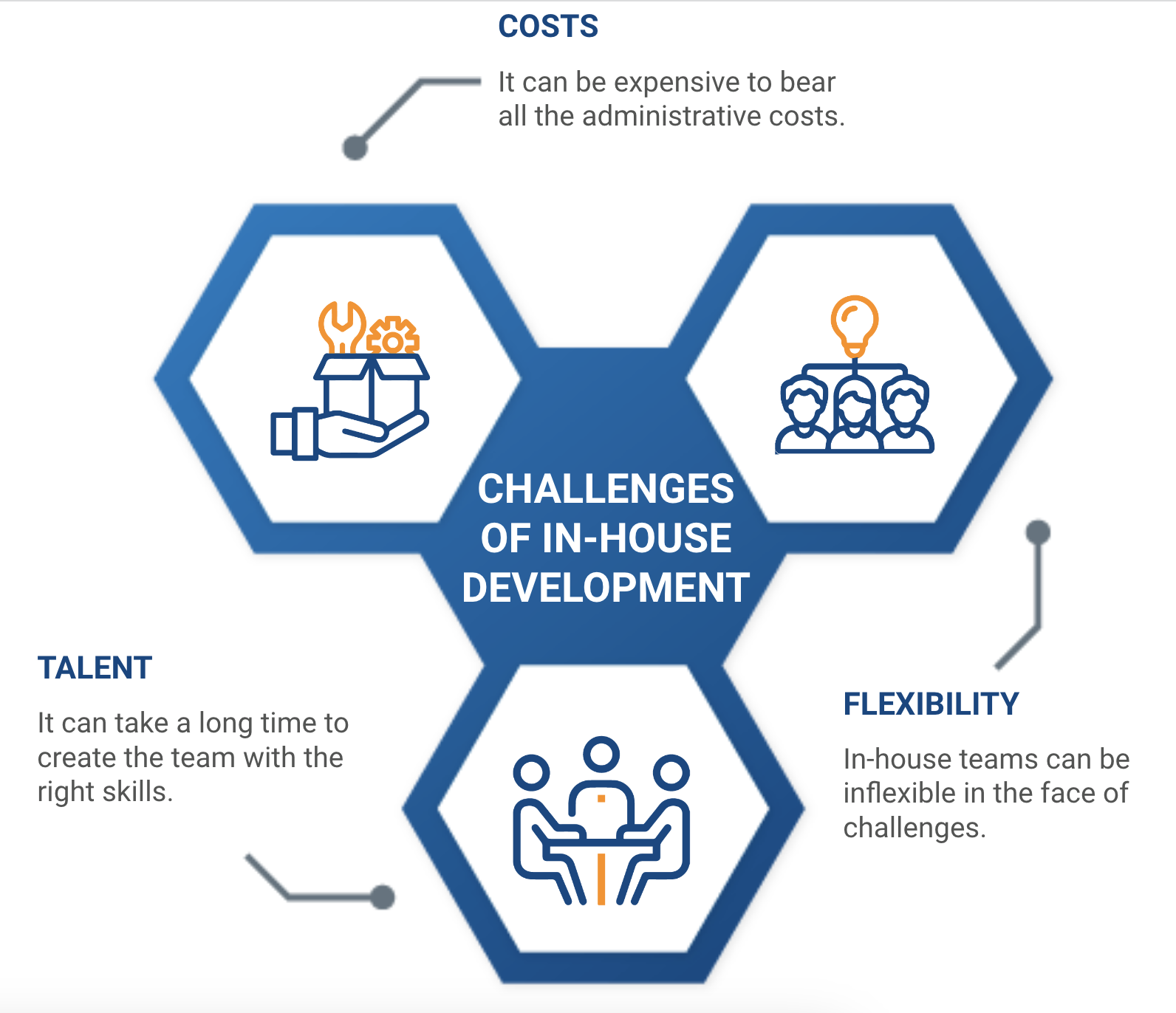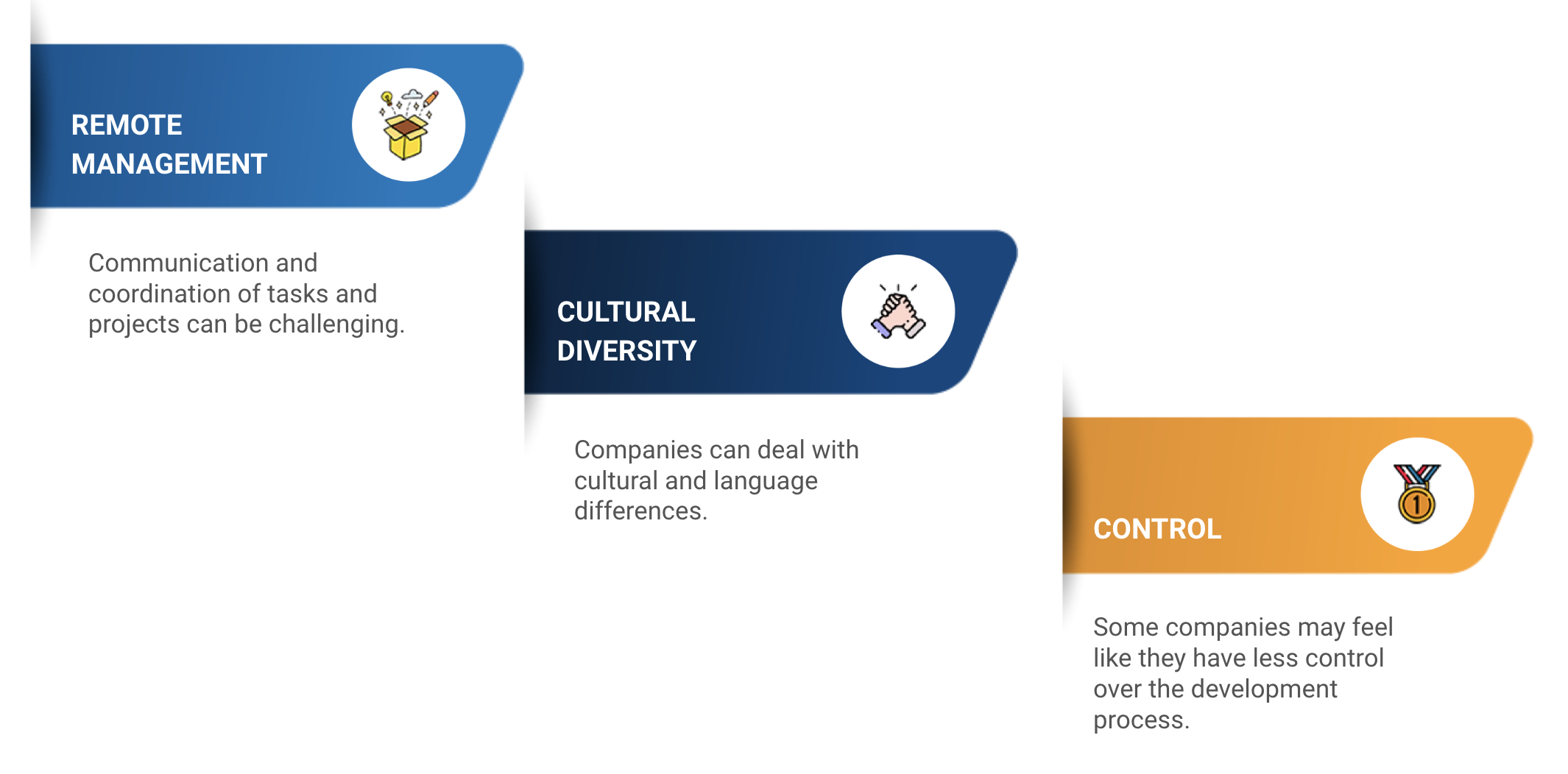
As a tech industry leader, you know how crucial it is to make strategic decisions for software project development. One of the key decisions companies in this sector face is choosing between nearshore software development and in-house development.
Both methods have pros and cons, and the decision you make can greatly affect your project's success and your company's profitability. We will now explain the differences between these two methods. We will also provide helpful details to assist you in making an informed choice.
In-House Development: Control and proximity
Let's start by examining in-house development. This approach suggests that the company manages all aspects of software development internally, utilizing its own resources and equipment. In other words, your company hires and maintains a team of software developers in its own facilities or nearby locations.
Advantages of In-House development
1. Total control:
One of the main advantages of in-house development is the total control you have over the process. You have the ability to define and adjust project priorities, workflow, and direction in real time.
Internalization allows companies to have complete control over the development process. Internalization gives companies full control over the development process. It allows them to manage priorities, make quick changes, and align the software with their strategic goals. This information is from an article on the DistantJob portal.
2. Direct Communication:
The physical proximity of your development team facilitates face-to-face communication, which can speed up decision-making and problem-solving.
3. Corporate Culture:
The team in your company understands and supports your goals. They share the same values and culture.
4. Confidentiality:
If you handle secret projects or sensitive data, developing in-house gives more security and control over information.

In-House Development Challenges
1. High Costs:
Maintaining an in-house development team can be expensive. You must bear the costs of salaries, benefits, training and technical resources, which can affect short-term profitability.
2. Talent Limitations:
Finding and retaining qualified technical talent can be a challenge, especially in a competitive market. It can take time to build a highly competent team.
3. Limited Flexibility:
In-house development may lack the flexibility to scale quickly or adapt to changes in project demand.

Nearshore Development: Global Efficiency
Nearshore development is when a company hires teams from nearby countries to work on their software. This is done instead of using their own facilities. This practice has become increasingly popular because of the advantages it offers.
Advantages of Nearshore Development:
1. Cost Reduction:
Nearshore development is often more profitable than in-house development, as labor costs can be significantly lower in some countries. “Outsourcing part of the operation or the entire project instead of handling it in-house can reduce costs. And it is particularly important because growing internal staff typically requires more time”, they noted in this Forbes article.
2. Access to Global Talent:
You can access extensive technical talent around the world, leveraging the experience and skills of highly qualified professionals. According to Deloitte, 50% of executives see talent acquisition as a major challenge in meeting business goals.
3. Scalability:
The ability to scale development teams quickly and efficiently is one of the main advantages of nearshore development.
4. Focus on Core Business:
By outsourcing software development, your company can focus on its main business while experts handle technical management.
Nearshore Development Challenges
1. Distance Management:
Geographic distance can pose challenges for communication and coordination. The difference in time zones can also influence availability.

2. Cultural Diversity:
Working with nearshore teams involves dealing with cultural and language differences, which may require greater attention to diversity management.
“While you and your nearshore development partner speak a shared language, it is important to keep in mind that you are likely to encounter some cultural differences. Additionally, if your business practices are not aligned with those of your partner, you may not be able to completely avoid misunderstandings and miscommunications”, they warned in CIO Insight magazine.
3. Perceptual Control:
Some companies may feel that outsourcing the development process to external teams reduces their control.
You should not make the decision between in-house development and nearshore development lightly. It depends on factors like your goals, project size, resources, and how much risk you can handle. Remember, there's no universal answer for all businesses. The decision will vary based on your organization's unique situation.
In many cases, a hybrid strategy that combines in-house development with nearshore development may be the optimal solution. This allows you to take advantage of the advantages of both approaches and mitigate the challenges associated with each.
To make good software development decisions, you need to know what you want, what you have, and what you aim for. Work with an experienced team to choose the right option for your business. company and projects.
Do you need a nearshore software development team for your next project? At Rootstack, we have +12 years of experience supporting companies in their digital transformation. Contact us!


